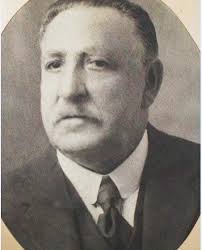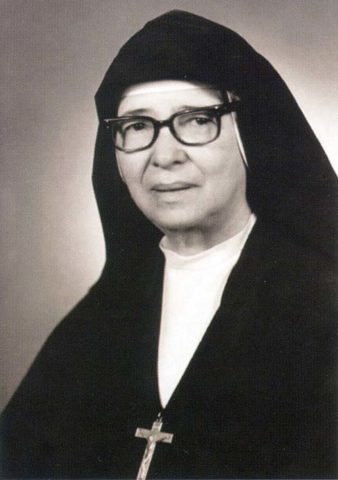
They have left their mark on the history of our country for their social work and good works for all those in need, and although they are no longer there, the country remembers them as great Citizens of Honor, Sr. María Romero Meneses and Antonio Giustiniani Casablanca.
Who was Antonio Giustiniani Casabianca?
He was a French doctor from Corsica (October 4, 1853 – Alajuela September 20, 1936).
He was in Panama during the construction of the interoceanic canal by the French and later moved to Costa Rica, where he married Luisa Millet de Castellá, belonging to a very wealthy family. From this marriage an only son was born, Miguel Giustiniani Millet, who died unmarried
Nicaraguan Salesian religious and beatified by John Paul II
Sister María Romero Meneses.

She was born on January 13, 1902, in Granada, Nicaragua. She was the daughter of Félix Romero Arana, a politician who served as finance minister in the José Santos Zelaya government; and Ana Meneses Blandón, of Spanish origin. Maria had thirteen brothers.
When she was 8 years old, on December 8, 1909, she made her First Communion. The following year, the missionaries of Don Bosco, Daughters of Mary Help of Christians (FMA), arrived in Nicaragua, a congregation of which she would be an integral part for the rest of her life.
Trajectory
At the beginning of 1920, at 18 years of age, she left for El Salvador to the FMA Institute, to begin her novitiate. On March 19 of that same year, he received the black maid and began with the use of the black habit that characterized her throughout the rest of her life. On January 16, 1921, she received the religious habit of the Daughters of Mary Help of Christians, so she was formally called “Sister Maria Romero”. During her years in the novitiate, she stands out for her skills in music, especially the piano, for which she is assigned the responsibility of music teacher and choir director.
On May 24, 1924, she returned to Nicaragua to teach music at the María Auxiliadora School in Granada, where she worked for 7 consecutive years. During those years, she also worked as an assistant to the internal students and taught piano, singing, drawing, painting, and typing.
In 1931 the congregation sent her to San José, Costa Rica, where she dedicated herself to serving those in need for 46 years. Despite considering Costa Rica as a “second homeland,” Sor María always considered herself Nicaraguan and never renounced her citizenship.
Among her most important social and spiritual works in Costa Rica are medical offices, which provide free general medicine and basic medical services to those without social security protection; boarding school for young people in the Casa María Auxiliadora that favors girls who previously lived on the street; training in activities such as cooking, sewing and other trades for girls and ladies; the Association for Aid to the Needy, which builds houses to house families who previously lived in subhuman conditions; “Ropero”, a service that offers clothing at symbolic prices and, sometimes, free of charge; Daily distribution of baskets of basic food to people with limited economic resources.
In 1977, while in Costa Rica, she had expressed to her superior that she felt tired, so she plans with her sisters to meet in Nicaragua as part of a vacation. On July 2, Sister Maria left for her native country.
She dies on July 7, 1977.
While in the summer house on the shore of the beach, she died of a heart attack, at the age of 75. On Saturday, July 9, 1977, the mortal remains of Sister María Romero were transferred to Costa Rica and buried in the General Cemetery. On November 9, 1991, they were exhumed and they were finally deposited in the Casa de la Virgen, next to the chapel, now known as the Mausoleum of Sor María Romero.
Social work in Costa Rica
In 1931 the congregation sent her to San José, Costa Rica, where she dedicated herself to serving those in need for 46 years. Among her most important social and spiritual works in Costa Rica are the following:
Medical offices, which provide free general medicine and basic medical services to those without social security protection. Consultations with dentists, ophthalmologists, pediatricians, and general practitioners are attended.
Boarding school for young people in the Casa María Auxiliadora that favors girls who previously lived on the street.
Training in activities such as cooking, sewing and other trades for girls and ladies.
ASAYNE: Association for Aid to the Needy, in Ciudadelas in Salitrillos de Aserri, which is made up of 70 houses to house families who previously lived in subhuman conditions. It spread to San Miguel de Desamparados and San Gabriel, in the canton of Aserri.
“Ropero”, a service that offers clothing at symbolic prices and, sometimes, free of charge.

